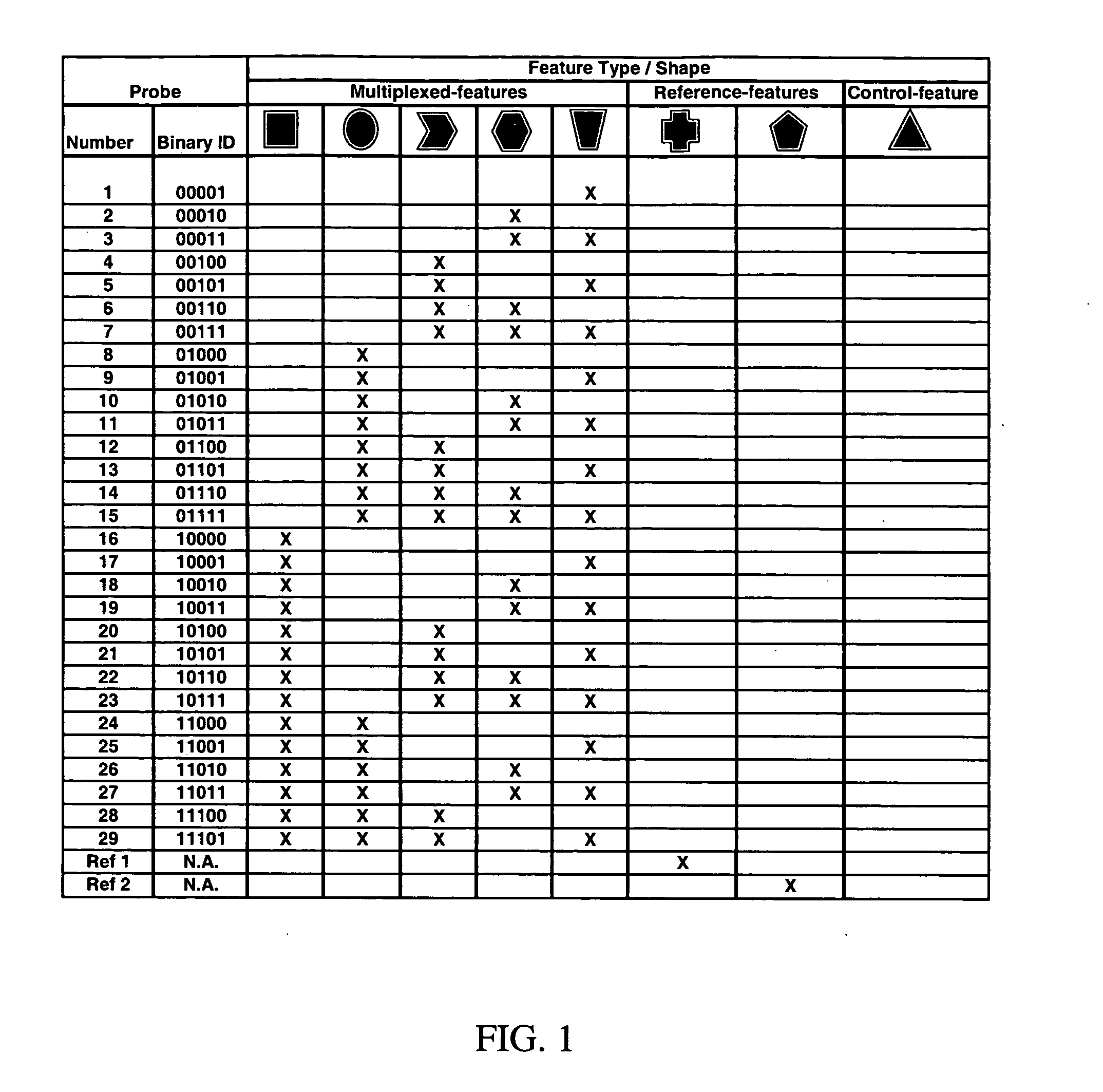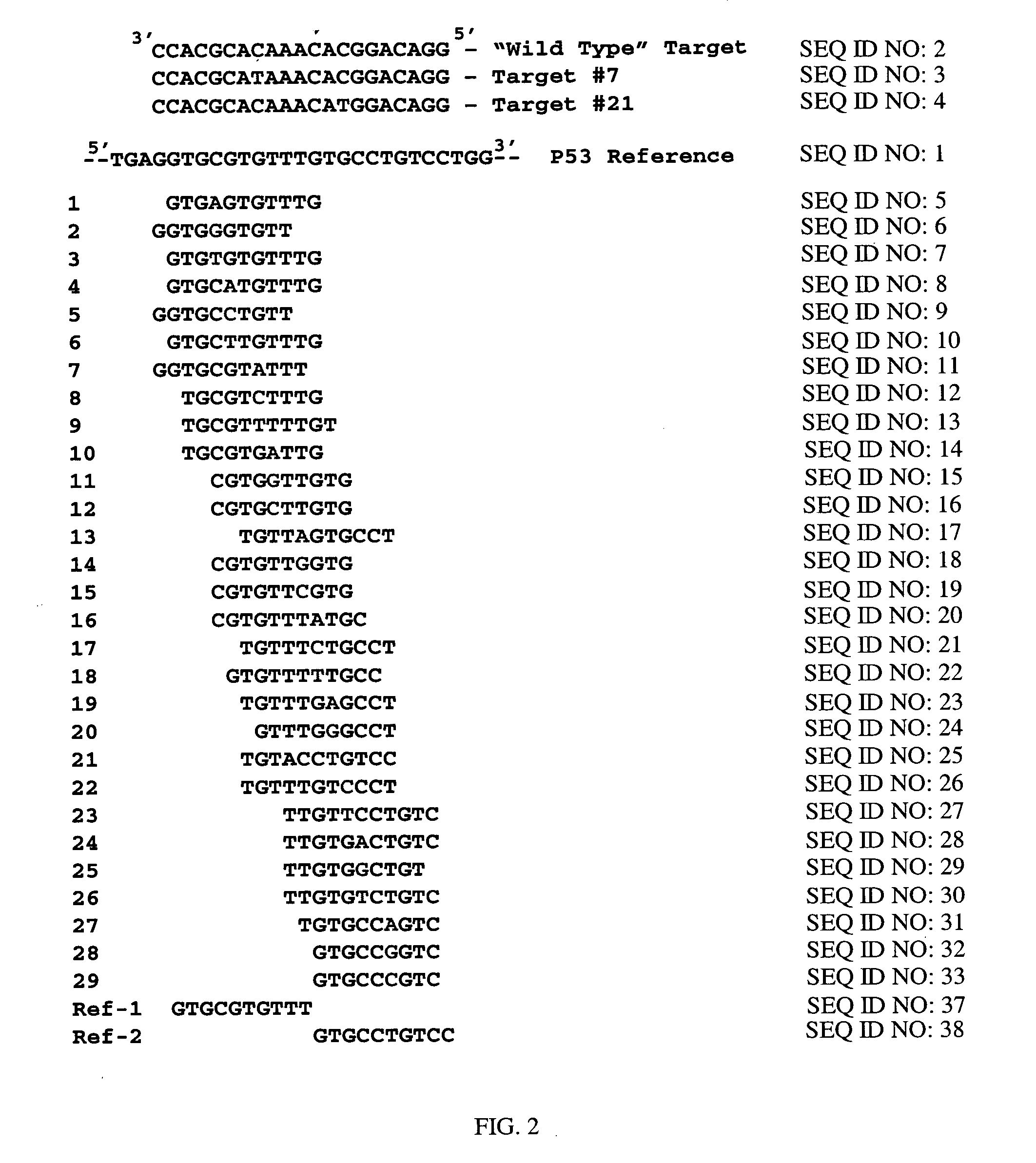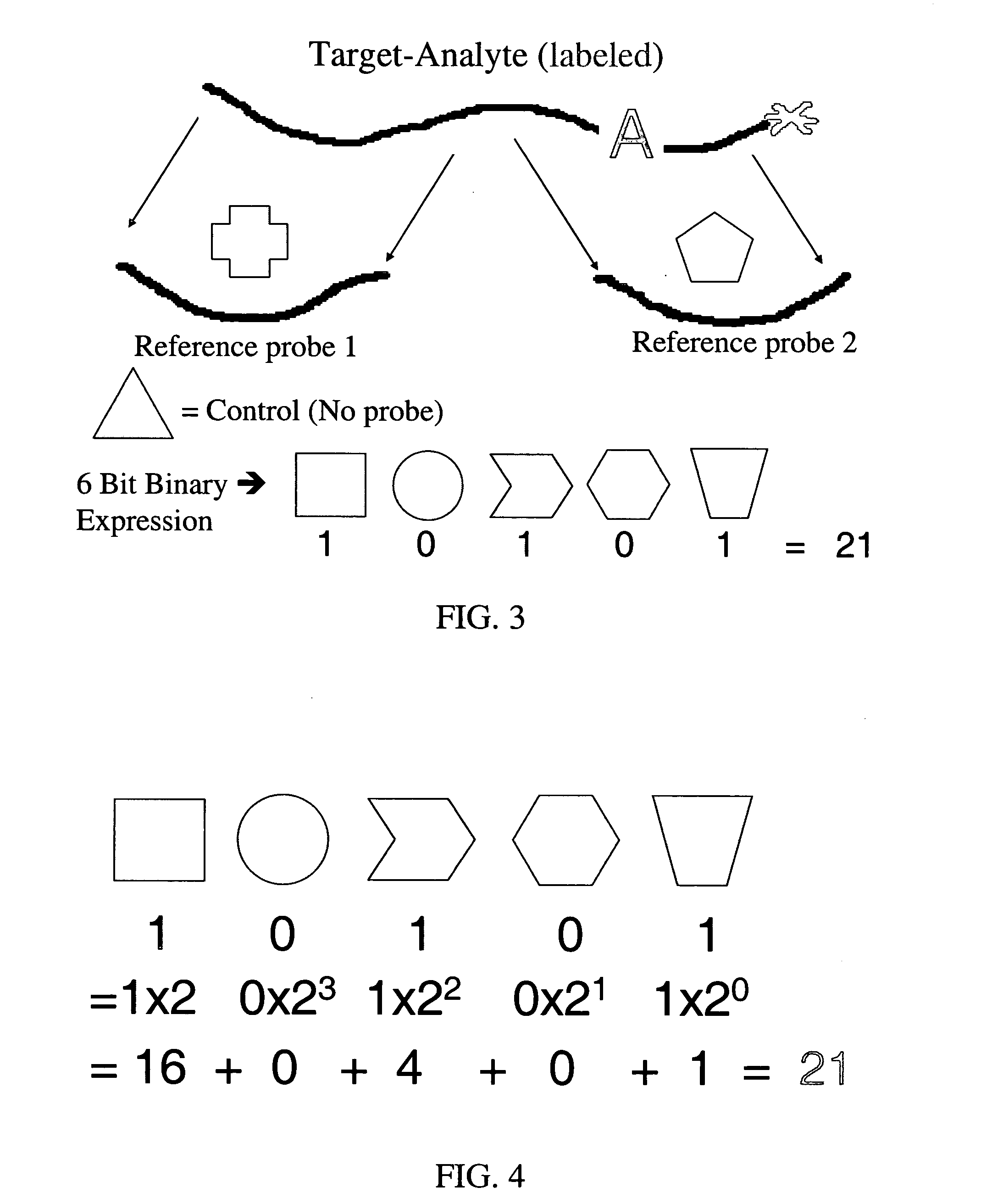System and method for the detection of analytes
a technology of analytes and detection methods, applied in biochemical apparatus and processes, specific use bioreactors/fermenters, after-treatment of biomass, etc., can solve the problems of inability to evaluate the amount of agents present, methods are less sensitive, and each strategy has its limitations, so as to increase the density of arrays, and increase the array density
- Summary
- Abstract
- Description
- Claims
- Application Information
AI Technical Summary
Benefits of technology
Problems solved by technology
Method used
Image
Examples
examples
[0071] Materials. Poly(ethylene glycol) diacrylate (PEG-da) with a weight average molecular weight of 10,000 was purchased from SunBio. Darocur 1173, a liquid, photoinitiated free-radical generator, was obtained from Ciba-Geigy. Functionalized single stranded DNA sequences for the single-nucleotide-polymorphism (SNP) detection experiment were purchased from Integrated DNA Technologies.
[0072] Pre-polymer Formulations. Sensors for the DNA detection assay were made from a pre-polymer solution composed of (all percentages listed by volume) 25% PEG-da 10,000, 2% Darocur 1173 photoinitiator, and 73% DI water containing probe DNA. For reference-features the pre-polymer solution had a probe concentration of 30□M; for pre-polymer formulations with more than one probe type each probe's final concentration in the pre-polymer was 30 μM.
[0073] Exposure Tool & Hydrogel Fabrication. Broadband ultraviolet radiation from a 200 W high-pressure mercury arc lamp (Oriel) was used for curing. The bulb ...
PUM
| Property | Measurement | Unit |
|---|---|---|
| Size | aaaaa | aaaaa |
| Acidity | aaaaa | aaaaa |
| Shape | aaaaa | aaaaa |
Abstract
Description
Claims
Application Information
 Login to View More
Login to View More - R&D
- Intellectual Property
- Life Sciences
- Materials
- Tech Scout
- Unparalleled Data Quality
- Higher Quality Content
- 60% Fewer Hallucinations
Browse by: Latest US Patents, China's latest patents, Technical Efficacy Thesaurus, Application Domain, Technology Topic, Popular Technical Reports.
© 2025 PatSnap. All rights reserved.Legal|Privacy policy|Modern Slavery Act Transparency Statement|Sitemap|About US| Contact US: help@patsnap.com



